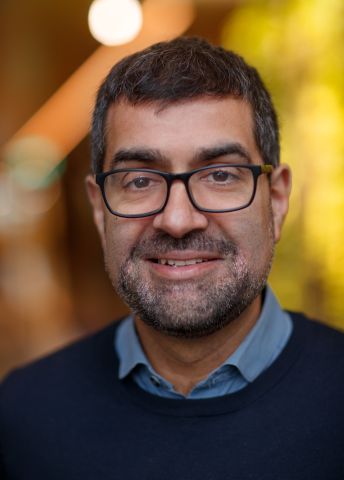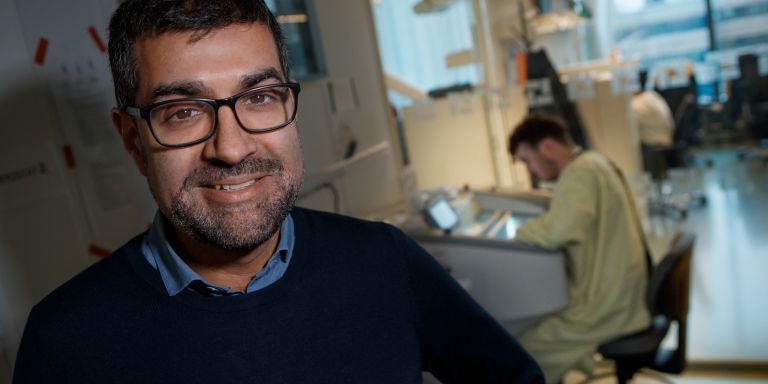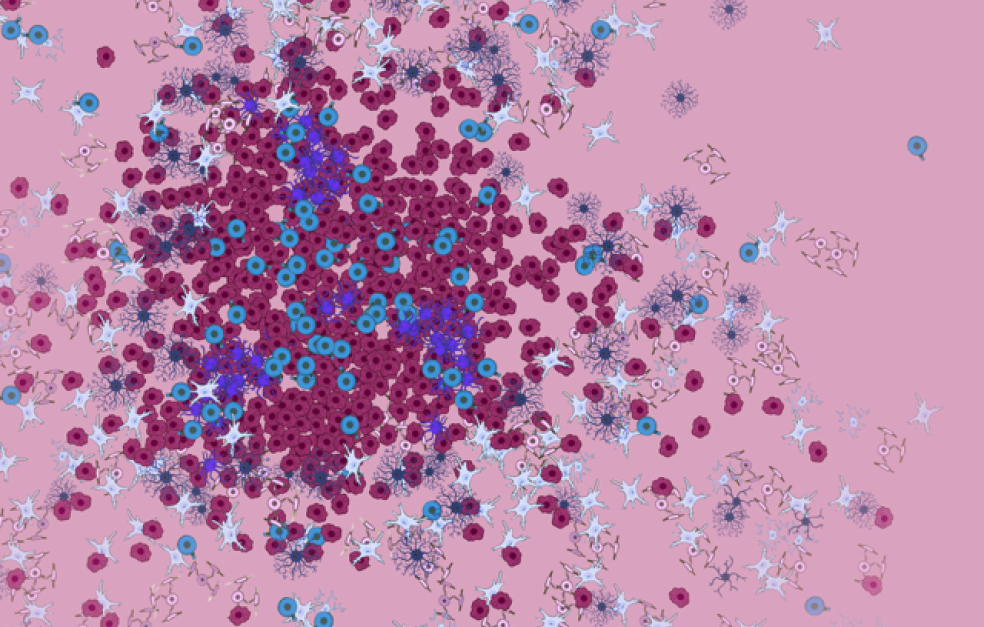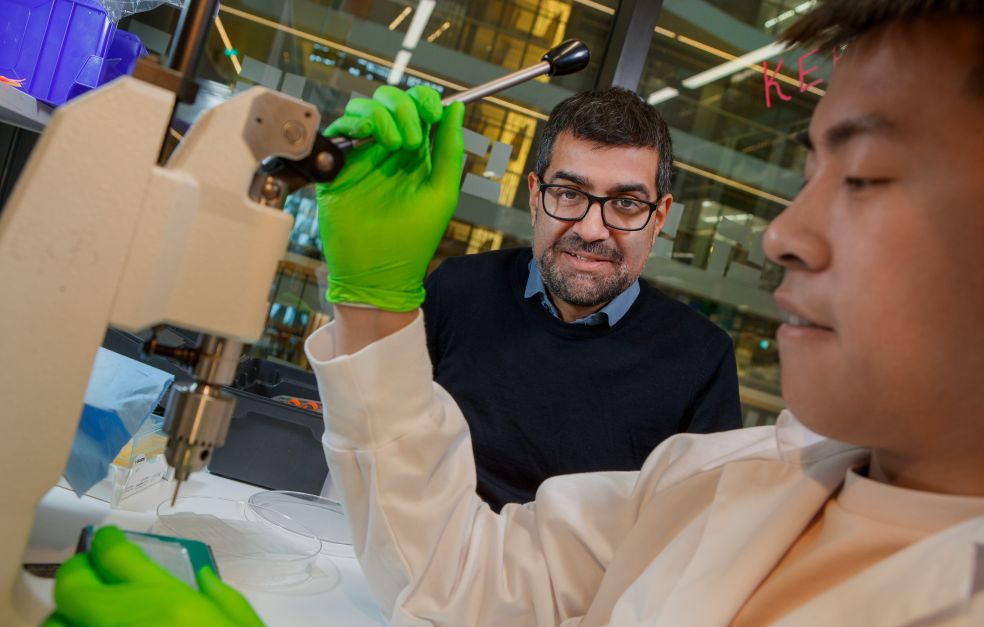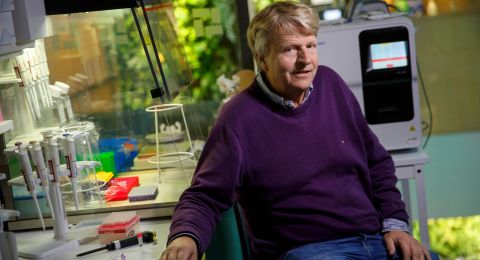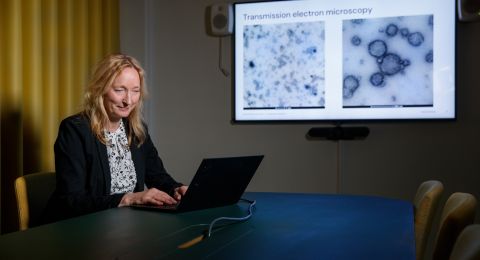Wallenberg Scholar Gonçalo Castelo-Branco is seeking to discover what happens in the brain during the progression of multiple sclerosis (MS). His findings may lead to new ways of diagnosing and treating the disease earlier than is currently possible.
Gonçalo Castelo-Branco
Professor of Glial Cell Biology
Wallenberg Scholar
Institution:
Karolinska Institutet
Research field:
Developing better diagnostic methods and new treatments for MS using novel molecular technologies
Every year up to 1,000 Swedes develop multiple sclerosis, and nearly 20,000 people are living with the lifelong disease. MS is an autoimmune disease in which the body’s immune system misfires, attacking the central nervous system, including the brain and spinal cord. Specifically, it targets myelin, the protective sheath surrounding nerve fibers, much like the insulation around electrical cables. This insulation enables electrical nerve signals to travel faster. However, in MS, the myelin is degraded, and the electric signals slow down. This contributes to the wide range of symptoms characteristic of the disease.
There is currently no cure, but treatments can slow its progress. However, diagnosis requires extensive investigation to rule out other potential causes of the diverse symptoms.
“We hope to develop technologies to identify molecular biomarkers that can reveal MS at an earlier stage. However, these biomarkers are of a completely new type, based on epigenetic signatures, making the work highly challenging.”
Gene regulation
Simply put, epigenetic mechanisms determine the genes that are active in a cell and those that remain silent. This in turn affects which proteins are produced in the cell. Castelo-Branco is developing new tools to track epigenetic changes believed to be associated with the disease.
Castelo-Branco hopes to move a step closer to solving the mystery of MS by combining this knowledge with mapping cells called oligodendrocytes. These are one of the brain’s most common cell types and have been shown to play a unique role in the progression of multiple sclerosis.
“In MS, we have shown that oligodendrocytes and their precursor cells, apart from being targets of the disease, can transform to acquire certain characteristics of immune cells. To understand why this happens, we have developed new technologies using single-cell and spatial analysis, focusing particularly on epigenetic changes.”
Mapping the progression
These technologies were initially developed and applied using mouse models of the disease, but the next step is to examine tissue samples from patients.
“We are using the techniques we developed to map epigenetic changes in MS patients. We also want to combine our methods with MRI scans of the patients.”
Magnetic resonance imaging (MRI) can be used to track how the disease progresses in the brain and spinal cord. Castelo-Branco aims to combine the images with epigenetic methods in order to piece together the puzzle of how the disease progresses.
The final step is to find biomarkers for the disease, but this will require further refinement of the epigenetic methods. If traces of the disease processes in MS can be found in a patient’s blood, earlier diagnosis may be possible.
Karolinska Institutet combines technological development with proximity to patients, enabling advanced research breakthroughs.
Certain cancers can leave traces in the blood in the form of minute fragments from tumor cells of altered DNA and associated proteins, and techniques have been developed for detecting these traces. However, no one has yet demonstrated the same results for multiple sclerosis. In a collaborative project with Maja Jagodic and Fredrik Piehl, also at Karolinska Institutet, Castelo-Branco is further developing these techniques to apply to MS.
“We are only just beginning a long journey, but with access to clinical samples and a research environment with cutting-edge technology as we have at Karolinska Institutet, we hope to create a more comprehensive picture of the progression of MS.”
Cutting-edge technology
Castelo-Branco’s interest in multiple sclerosis was sparked during his time as a postdoc. He became particularly curious about the role of oligodendrocytes in the progression of multiple sclerosis. To map this, he realized he would need access to patients as well as the latest technologies.
“Sweden is an international leader in these areas. Many of the technologies now used in the field were developed here, and particularly in the Stockholm-Uppsala scientific environment, which has a considerable critical mass in the field. So this is naturally a good place for me to continue my work,” he says.
Mapping the progression of MS and ultimately stopping the disease will require a concerted multidisciplinary approach.
“My research team includes people from highly diverse scientific backgrounds with different ideas and perspectives on the same scientific problems. The days when one person alone could make a difference are over. Nowadays, strong teamwork is essential for scientific discovery,” says Castelo-Branco.
For about ten years, he spent most of his free time coaching his son’s football team. Following the development of young players is something he remembers fondly.
“The role of a soccer coach has many similarities to that of a research group leader. Research is a team effort, in which your role as a leader is to bring out the best in each person and then combine all the knowledge and skills into a successful team,” says Castelo-Branco.
Text Magnus Trogen Pahlén
Translation Maxwell Arding
Photo Magnus Bergström
